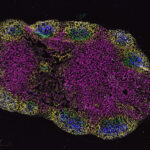Using augmentative communication to support COVID-19 patients

People with COVID-19 on a ventilator are unable to speak to express their needs, which can complicate their care and lead to poorer outcomes. The Augmentative Communication Program at Boston Children’s Hospital is supporting hospitals around the nation and around the world by helping them communicate with these critically ill patients in the hopes of improving their fate.
One way Boston Children’s is having a widespread impact is through the Vidatak E-Z board, which is a communication board that contains a suite of symbols created by John Costello, MA, CCC-SLP, director of the Augmentative Communication Program.
Symbol sets for COVID-19 patients
Costello developed the symbols three decades ago in conjunction with some of our patients in the intensive care unit (ICU) to give them a way to express their unique needs, so clinicians can respond to them at the earliest stage. The symbols convey the type of information patients in the ICU need to communicate with clinicians, such as: I need to be turned or I need to be suctioned.
“When we first created these symbols, many of our nurses saw that this allowed them to provide better patient care. They no longer had to wait for vital signs to change since patients now had a way to say they needed something,” Costello says. “This early work laid the foundation for the Vidatak board that is now being used as one of the tools for COVID-19 patients worldwide,” he explains.
Boston Children’s ultimately licensed the symbols to Vidatak to share them with a broader audience. Now during COVID-19, hospitals all around the world are using these boards with patients unable to speak on their own. Costello points out that this is one tool of many that are available to help patients and staff communicate effectively.
Influencing national communication efforts
Through his work at Boston Children’s, Costello also was part of a small group that helped the Joint Commission to create its first set of standards on how to communicate with patients who need alternative options. This is especially significant since communication is increasingly recognized as a critical part of providing safe and high-quality care.
In response to the coronavirus crisis, this guiding group was recently expanded to create the patient-provider communication COVID-19 task force. The task force is a national effort that brings together speech-language pathologists, nurses, and psychologists from across the United States to improve patient-provider communication during COVID.
Providing resources for COVID-19 patients
Rachel Santiago, MS, CCC-SLP, clinical coordinator of Boston Children’s Inpatient Augmentative Communication Program, is very involved in the national task force efforts. She is helping to bring communication needs to the forefront of national efforts to support COVID-19 patients on ventilators and provide them with ways to communicate their needs so clinicians can respond at the earliest stage. The group makes available a variety of free resources and tools that COVID-19 patients and families can download and print to communicate. These tools also play an important role in preventing patients from feeling isolated and promoting socialization.
Drawing on Boston Children’s augmentative communication efforts
To further help other groups benefit from Boston Children’s expertise in augmentative and alternative communication efforts, Santiago also draws on Boston Children’s experiences to mentor clinicians around the world who are interested in developing an augmentative communication service in their own institutions. This is enabling many general hospitals caring for an influx of patients who are mechanically ventilated to build on our experiences and find new ways to communicate with this population.
Customizing our approach for each patient

“At Boston Children’s, we have a dedicated service that allows us to customize our own communication strategies for each patient’s unique needs,” Santiago says. As a result, she says when she and her colleague Meredith Sager, SLP, work with COVID-19 patients and others, they are using some of the original symbols Costello created for the Vidatak board, as well as some of the symbols from the task force resources, and they combine these with other tools and resources to ensure every child receives the highest quality care.
Get answers about COVID-19 and learn more about how we are supporting patients and families.
Related Posts :
-

Model enables study of age-specific responses to COVID mRNA vaccines in a dish
mRNA vaccines clearly saved lives during the COVID-19 pandemic, but several studies suggest that older people had a somewhat reduced ...
-

New insight into the effects of PPIs in children
Proton-pump inhibitors (PPIs) are frequently prescribed to suppress stomach acid in patients with gastroesophageal reflux disease (GERD). Prescribing rates of ...
-

Creating the next generation of mRNA vaccines
During the COVID-19 pandemic, mRNA vaccines came to the rescue, developed in record time and saving lives worldwide. Researchers in ...
-

Reversing the trend: Easing the mental health boarding crisis in emergency rooms
Anxiety, depression, and suicide attempts have been rising over the past decade, especially among teens, often landing them in emergency ...





